By Prapti Bamaniya
Tuesdays are a race against time at Toronto’s Bombay Palace.
Rajiv Chenny is using a marker to carefully label styrofoam boxes full of spicy, warm curries, rotis, rice and lentil soups. The 120-seat restaurant is empty except for a handful of employees, working almost mechanically. Chenny’s staff quickly scoops foods into styrofoam containers, fastening them and adding them to bigger cardboard boxes, lined around the perimeter of the restaurant, ready to be delivered before dinnertime. Steam escapes the kitchen in the back, and the sound of vegetables and spices jumping in oil fills the room as the two head chefs cook the orders for today.
Tuesday’s offerings are different from the Bombay Palace à la carte or takeout menu. They are from the tiffin menu, cooked with less expensive and healthier ingredients. “Simple, homestyle food is something that you’ll never get tired of or feel heavy about,” says Chenny, the co-owner of Bombay Palace.
The tiffin is a type of lunchbox, originating in India. Usually it is a four-tiered container, with each layer containing an element of a meal. Old and young alike take their tiffins to work and school to enjoy a slice of home, outside of home. Chenny understands that when people move to Canada, they want to feel the same way. “Takeout is different,” he says. “Tiffin is like when your mom makes you food and no one in the entire world makes anything like it. But this food really takes you back.”
Although they don’t use the iconic containers, Bombay Palace provides preset combinations of the same elements found in a tiffin. For example, one combination includes five curries, rice, twelve rotis, a dessert, pickle and chutney. Customers pay for about 30 meals’ worth of Indian tiffin food delivered weekly to their doorstep. Each week the specific curries change, and Chenny and his staff never repeat the same dish twice in a month.
“Do you know every eight kilometres in India the tastes of the food change?” asks Chenny, puffing out his chest. “There’s nothing like Indian food. The culture is so rich, diverse and it’s so warm.”
Chenny and the other co-owner of Bombay Palace, Sanjiv Malhotra, met in 2009 while working at another Indian restaurant. “As soon as we met, we just connected, we clicked,” Chenny recalls.
Before Bombay Palace, Chenny worked as a manager for hotels around the world. But when realized he wanted to also become part of the food business, he started work at a restaurant.
When they met, Malhotra was the chef and Chenny worked part-time as a waiter. The two gradually learned about each other’s dreams over cups of coffee after shifts, and eventually decided to set up a restaurant.
“I just had this one dream of starting something of my own,” Chenny says. “And when an opportunity came by, I moved out of the corporate world of hotels [where he’d worked for 12 years], into operating the Bombay Palace restaurant. I’m glad I got to give it a touch of home and homestyle cooking.”
Della Antony, one of Chenny’s staff, enjoys the company of her coworkers at Bombay Palace, she says while teasing Tirth Patel, an employee. She also never gets tired of the Bombay Palace food, even though she eats it pretty often. “I’m from Kerala, and everyone here is from such different places,” she says. “It’s a fun environment.”
She soon after gets playfully scolded by Chenny for moving her mouth more than her hands. “Someone has to keep them in check, right?” says Chenny through a laugh before heading back to the kitchen.
Chenny still includes a photo on their website of their first customer’s meal as a way to remember the humble beginnings of his restaurant.
That customer sparked Chenny’s love for feedback. He began his business by constantly asking what he could do better, and in that process, he developed warm relationships with those he feeds. “People who I served as customers ended up becoming friends,” he explains. “One of my oldest customers—who is still with us—has been with us for the last four and a half years. He’s more like a family member now.”
Not all customers know the effort and lengthy process that goes into tiffins. Before cooking, packaging and delivering the tiffins, Chenny and Malhotra first determine the menu for the week, trying out recipes and determining what dishes complement each other.
 Steam fills the room as Chenny scoops the piping hot butter chicken curry into styrofoam containers on Tuesday, February 23, 2021 (Prapti Bamaniya/T•)
Steam fills the room as Chenny scoops the piping hot butter chicken curry into styrofoam containers on Tuesday, February 23, 2021 (Prapti Bamaniya/T•)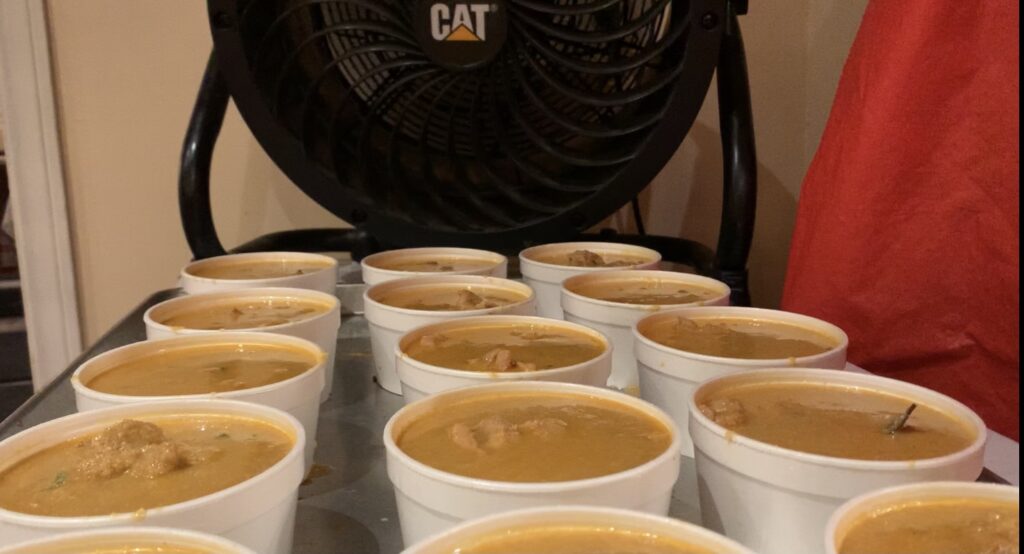 The curry was too hot to place lids and start packing, and with minimal time left, the containers are all placed in front of a fan to cool on Feb 23. (Prapti Bamaniya/T•)
The curry was too hot to place lids and start packing, and with minimal time left, the containers are all placed in front of a fan to cool on Feb 23. (Prapti Bamaniya/T•)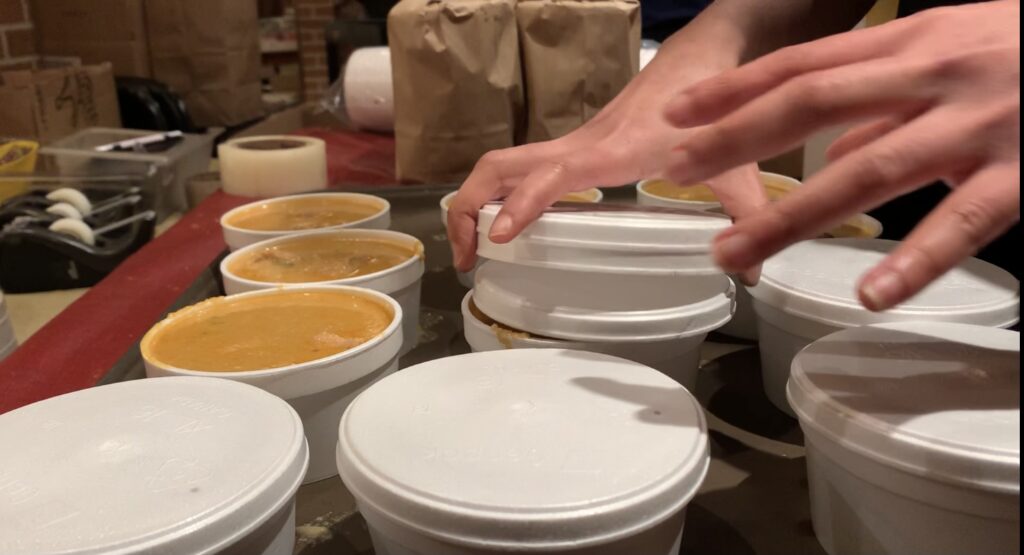 The Bombay Palace staff starts placing lids and adding stamps to the containers on Tuesday, Feb. 23. (Prapti Bamaniya/T•)
The Bombay Palace staff starts placing lids and adding stamps to the containers on Tuesday, Feb. 23. (Prapti Bamaniya/T•)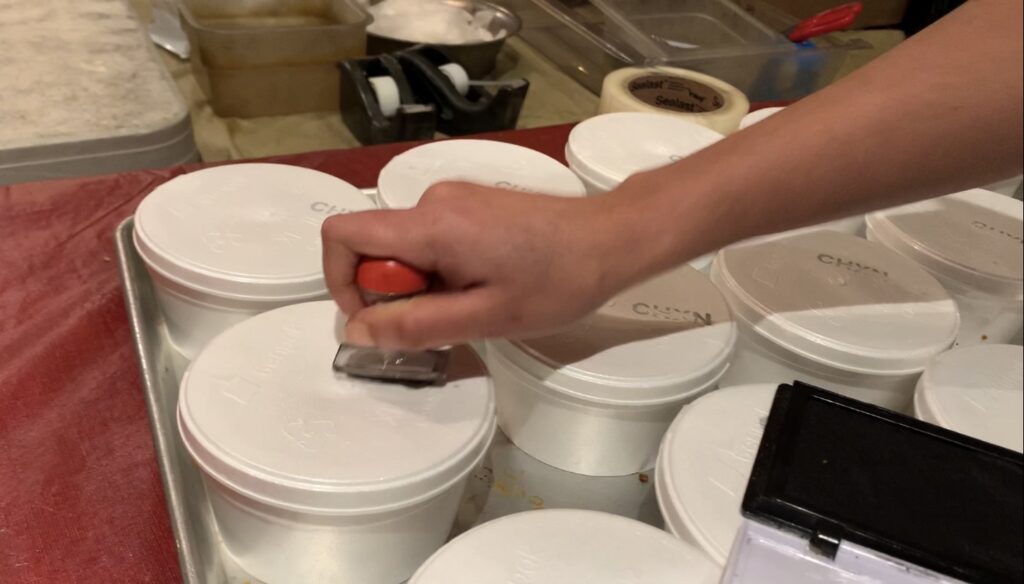 The Bombay Palace staff starts placing lids and adding stamps to the containers on Tuesday, Feb. 23. (Prapti Bamaniya/T•)
The Bombay Palace staff starts placing lids and adding stamps to the containers on Tuesday, Feb. 23. (Prapti Bamaniya/T•)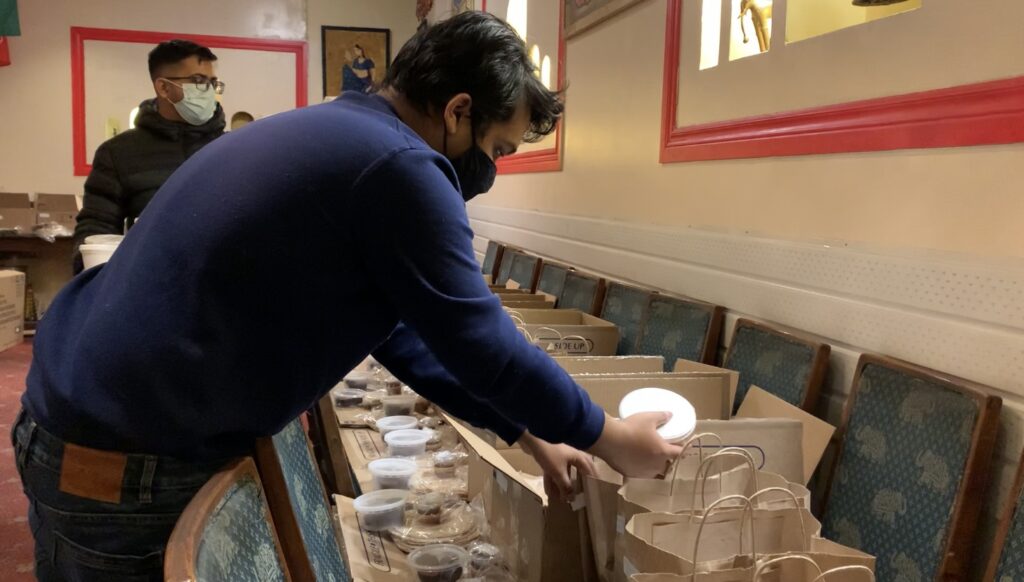 The staff carefully places the stamped and lidded containers into boxes filled with other containers that will be delivered to customers who have pre-ordered the tiffins on Feb. 23. (Prapti Bamaniya/T•)
The staff carefully places the stamped and lidded containers into boxes filled with other containers that will be delivered to customers who have pre-ordered the tiffins on Feb. 23. (Prapti Bamaniya/T•)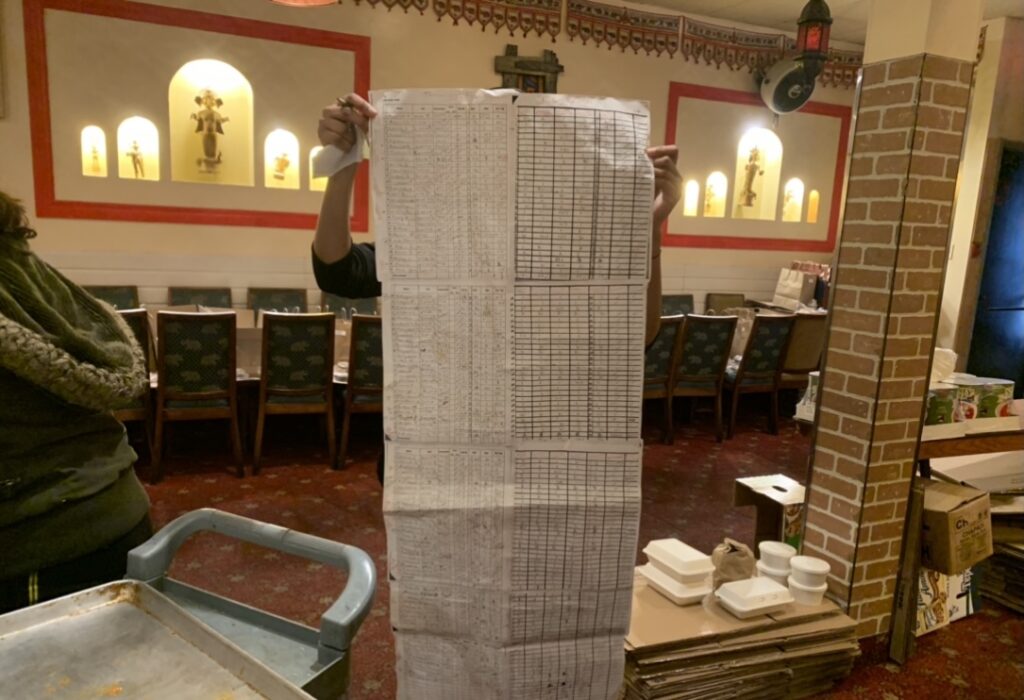 Chenny makes his staff check the very long auditing list to be extra sure that orders are placed correctly Feb 23 (Prapti Bamaniya/T•)
Chenny makes his staff check the very long auditing list to be extra sure that orders are placed correctly Feb 23 (Prapti Bamaniya/T•)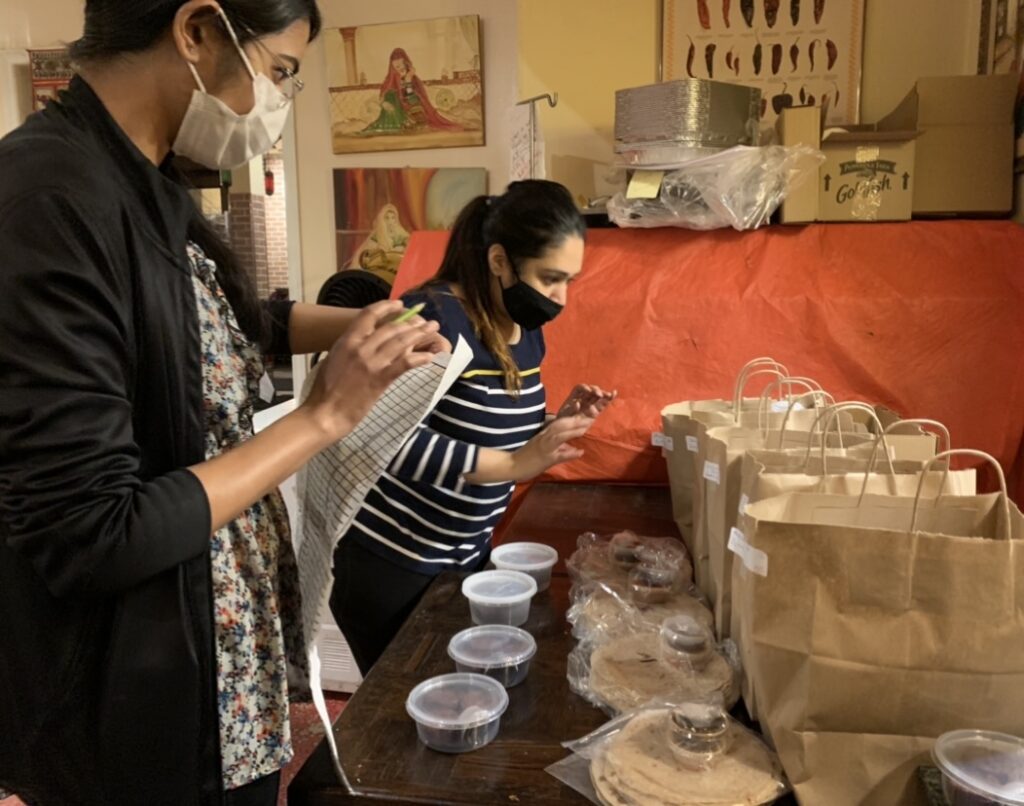 Chenny’s staff checks orders to be sure that customers get what they requested on Feb. 23. (Prapti Bamaniya/T•)
Chenny’s staff checks orders to be sure that customers get what they requested on Feb. 23. (Prapti Bamaniya/T•)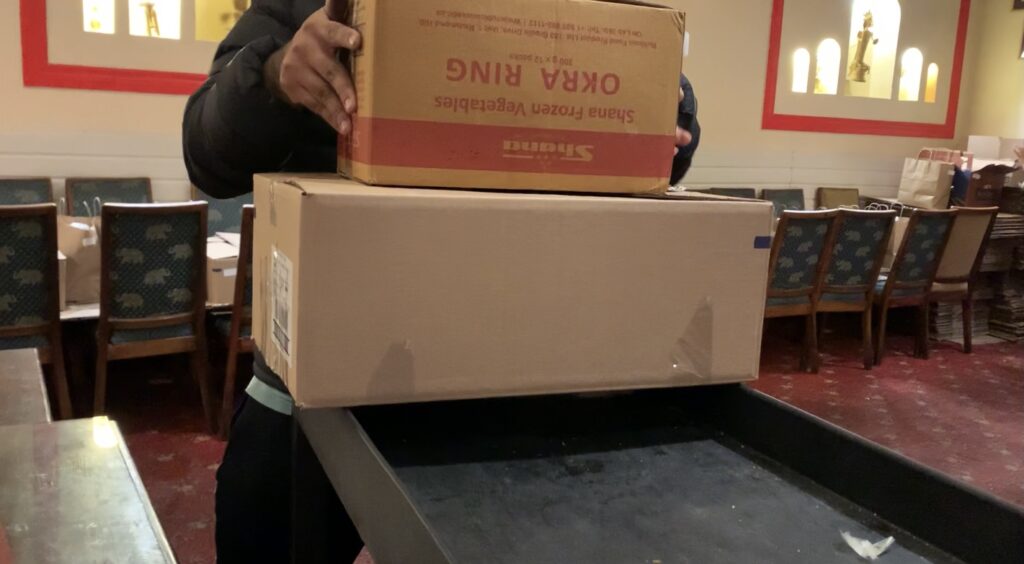 Finished boxes are placed on a cart, and then taken to cars to be delivered to customers who ordered tiffins. (Prapti Bamaniya/T•)
Finished boxes are placed on a cart, and then taken to cars to be delivered to customers who ordered tiffins. (Prapti Bamaniya/T•)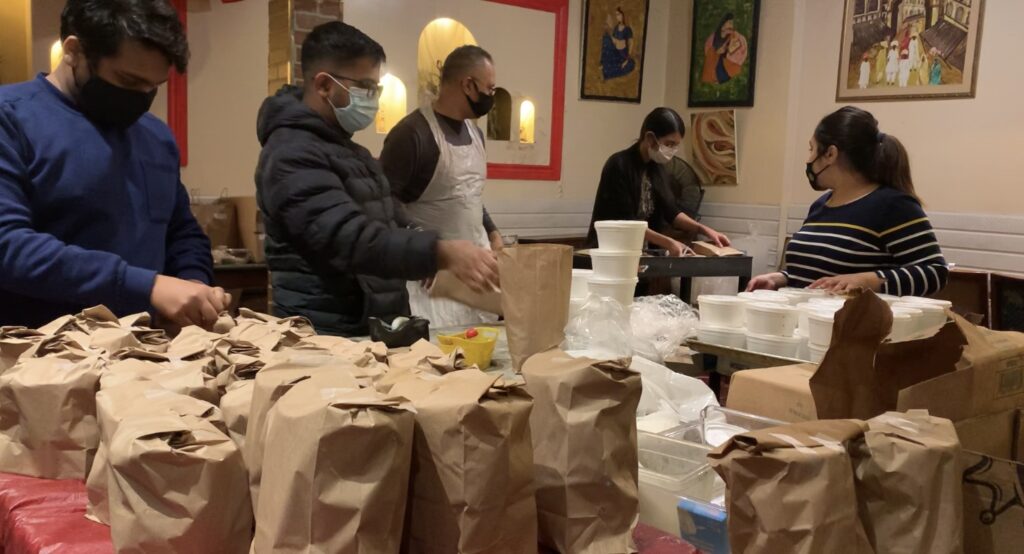 The busy environment at The Bombay Palace (Prapti Bamaniya/T•)
The busy environment at The Bombay Palace (Prapti Bamaniya/T•)
The cold winter air is let in as a staff member sticks a door stopper in the entrance of the restaurant. The smell of the curry seeps outside, and follows the dozens of boxes being loaded into Tirth Patel’s car. Patel is one of Chenny’s employees, who’s been coming in every Tuesday for two years to package and deliver the tiffins.
“I like making things and I like to work in a fast-paced environment. And that’s what we need here,” says Patel. The middle-aged employee moved from India to Mississauga about five years ago, and his sister followed shortly after. He hopes to pursue a degree in computer programming at Waterloo University or the University of Toronto beginning in January 2022. “Everybody misses their own town, right? … The weather is different from India, but still I don’t mind it here. Plus, I like the Indian food here, too,” says Patel, referring to the food in the restaurant.
Patel remembers the food his mother would make for him, filled with spices, always warm, and full of love. After a long day at university in India, whenever he’d come home to his family, whether it was a 5 p.m. or 9 p.m, his mother would have a plate of his favourite food ready. “It would always be spicy, but in Canada, no one here can tolerate it, so it’s not the same.”
Although it’s not the same, the Bombay Palace food remains special to him. “The food at home will always be different, but the food at the restaurant reminds me of the different home that I made here in Canada,” he says.
Tiffins remains as busy as ever, providing a sense of home to people who need it — and occupying Chenny’s Tuesdays with a weekly race against time, which he and his staff always end up winning.
